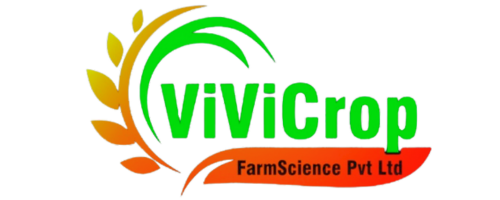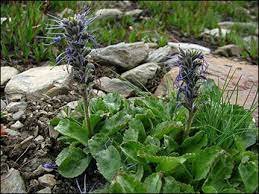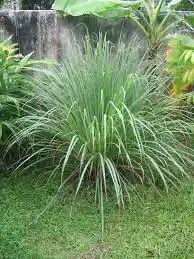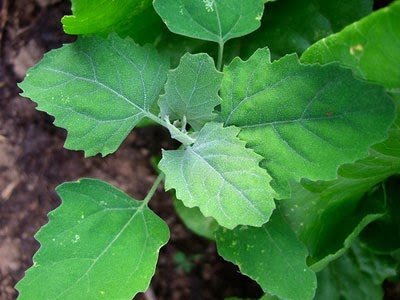Anthurium Nutrition Requirements
Nutrition required by Anthurium at each stage of its life cycle.
SOIL PREPARATION

Soil Preparation
Soil preparation is crucial for Anthurium plants as they require well-draining, aerated soil rich in organic matter.
Here's a soil preparation method and the nutrition requirements for Anthuriums:
### Soil Preparation Method:
1. **Selecting the Right Soil**:
- Anthuriums thrive in well-draining, loose soil that retains moisture but does not become waterlogged.
- Choose a potting mix specifically formulated for Anthuriums or prepare a mix using equal parts of peat moss, perlite, and pine bark.
2. **Container Selection**:
- Use pots or containers with drainage holes to ensure excess water can drain freely.
- Select a container that provides ample space for the Anthurium's roots to grow and spread.
3. **Preparing the Soil**:
- Fill the container with the prepared potting mix, leaving some space at the top to accommodate watering.
- Ensure the soil is evenly distributed and lightly packed to provide stability for the plant.
4. **Adding Organic Matter**:
- Incorporate organic matter such as compost or well-rotted manure into the potting mix to improve soil fertility and structure.
- Mix the organic matter thoroughly into the soil to ensure even distribution.
5. **Adjusting Soil pH**:
- Anthuriums prefer slightly acidic to neutral soil with a pH range of 5.5 to 6.5.
- Test the soil pH and adjust if necessary using pH-adjusting products or amendments.
6. **Soil Moisture**:
- Water the prepared soil thoroughly to ensure it is evenly moist but not waterlogged.
- Allow excess water to drain away before planting Anthuriums.
### Nutrition Requirements:
Anthuriums have specific nutrition requirements to support healthy growth and flowering:
1. **Nitrogen (N)**:
- Nitrogen is crucial for promoting lush foliage growth and overall plant vigor.
- Apply a balanced fertilizer with a higher nitrogen content to support healthy foliage development.
2. **Phosphorus (P)**:
- Phosphorus is essential for promoting root development and flower production.
- Use a fertilizer with a higher phosphorus content to support robust root growth and encourage flowering.
3. **Potassium (K)**:
- Potassium contributes to overall plant health, disease resistance, and flower quality.
- Incorporate a fertilizer with balanced potassium levels to promote strong, healthy plants and vibrant flowers.
4. **Micronutrients**:
- Ensure adequate levels of micronutrients such as iron, manganese, zinc, and boron by incorporating micronutrient-rich fertilizers or supplements into the soil.
- Micronutrients are essential for various metabolic processes and overall plant health.
5. **Organic Matter**:
- Organic matter provides essential nutrients and improves soil structure and water retention.
- Incorporate compost or well-rotted manure into the soil during preparation to enrich the soil with organic nutrients.
By following these soil preparation methods and providing the necessary nutrients, you can create an optimal growing environment for Anthuriums, promoting healthy growth and vibrant flowering. Regular monitoring of plant growth and nutrient levels will help ensure that the plants receive the necessary nutrition for optimal performance.
Early Growth (Germination to Establishment)

Early Growth
During the early growth stage (germination to establishment) of Anthurium, the following nutrition requirements are essential to support healthy growth and establishment:
1. **Nitrogen (N)**:
- Nitrogen is crucial for promoting vegetative growth, including leaf development and stem elongation.
- Provide a balanced fertilizer with a higher nitrogen content to support vigorous early growth and establishment of Anthurium plants.
2. **Phosphorus (P)**:
- Phosphorus supports root development and overall plant establishment.
- Ensure an adequate supply of phosphorus through fertilization to promote strong root growth and enhance the establishment of Anthurium plants.
3. **Potassium (K)**:
- Potassium contributes to overall plant health, disease resistance, and stress tolerance.
- Incorporate a fertilizer with balanced potassium levels to support early growth, improve plant vigor, and enhance Anthurium establishment.
4. **Micronutrients**:
- Micronutrients such as iron, manganese, zinc, and boron play essential roles in various metabolic processes during early growth.
- Ensure that the soil provides sufficient micronutrients or supplement with micronutrient-rich fertilizers to prevent deficiencies and promote healthy early growth and establishment of Anthurium plants.
5. **Water**:
- Adequate water supply is crucial for seed germination and early seedling establishment.
- Maintain consistent soil moisture levels by watering Anthurium plants as needed, ensuring that the soil remains evenly moist but not waterlogged.
6. **pH Level**:
- Ensure that the soil pH is within the optimal range of 6.0 to 7.0 for Anthurium plants during the early growth stage.
- Adjust soil pH if necessary to optimize nutrient availability and support healthy growth and establishment of Anthurium plants.
By meeting these nutrition requirements during the early growth stage, you can promote healthy seed germination, robust seedling development, and successful establishment of Anthurium plants. Regular monitoring of plant growth and nutrient levels will help ensure that the plants receive the necessary nutrition for optimal early growth and establishment.
Tillering Stage (Shoot Development)

Tillering Stage
During the tillering stage (shoot development) of Anthurium, the following nutrition requirements are crucial to support healthy growth and development:
1. **Nitrogen (N)**:
- Nitrogen is essential for promoting lush foliage growth and vigorous shoot development in Anthurium.
- Provide a balanced fertilizer with a higher nitrogen content to support the rapid growth of shoots and leaves during the tillering stage.
2. **Phosphorus (P)**:
- Phosphorus supports root development, flower formation, and overall plant health in Anthurium.
- Ensure an adequate supply of phosphorus through fertilization to promote strong root growth and robust shoot development during the tillering stage.
3. **Potassium (K)**:
- Potassium contributes to plant vigor, disease resistance, and overall plant quality in Anthurium.
- Incorporate a fertilizer with balanced potassium levels to support healthy shoot development, improve plant resilience, and enhance overall growth during the tillering stage.
4. **Calcium (Ca)**:
- Calcium is important for cell wall formation and overall plant structure in Anthurium.
- Maintain adequate calcium levels in the soil to support healthy shoot development and prevent disorders such as blossom end rot.
5. **Magnesium (Mg)**:
- Magnesium is essential for chlorophyll production and photosynthesis, which are vital for shoot development and growth in Anthurium.
- Ensure sufficient magnesium levels in the soil to support healthy shoot development and maintain overall plant vigor during the tillering stage.
6. **Micronutrients**:
- Micronutrients such as iron, manganese, zinc, and boron play crucial roles in various metabolic processes and enzyme activities during shoot development.
- Ensure that the soil provides sufficient micronutrients or supplement with micronutrient-rich fertilizers to prevent deficiencies and promote robust shoot growth during the tillering stage.
7. **Water**:
- Adequate water supply is crucial for supporting shoot development and growth during the tillering stage of Anthurium.
- Maintain consistent soil moisture levels by watering Anthurium plants as needed, ensuring that the soil remains evenly moist but not waterlogged.
8. **pH Level**:
- Ensure that the soil pH is within the optimal range of 5.5 to 6.5 for Anthurium during the tillering stage.
- Adjust soil pH if necessary to optimize nutrient availability and support healthy shoot development and growth.
By meeting these nutrition requirements during the tillering stage, you can promote vigorous shoot development, lush foliage growth, and overall plant vigor in Anthurium. Regular monitoring of plant growth and nutrient levels will help ensure that the plants receive the necessary nutrition for optimal performance.
Flowering

Flowering
During the flowering stage of Anthurium plants, the following nutrition requirements are crucial to support healthy flower development and overall plant vigor:
1. **Nitrogen (N)**:
- Nitrogen is essential for promoting vegetative growth and maintaining leaf health during the flowering stage.
- Provide a balanced fertilizer with a moderate nitrogen content to support healthy foliage and ensure continuous flower production.
2. **Phosphorus (P)**:
- Phosphorus is vital for promoting flower formation and enhancing bloom size and quality.
- Provide a fertilizer with a higher phosphorus content to support abundant flower production and vibrant colors in Anthurium plants during the flowering stage.
3. **Potassium (K)**:
- Potassium contributes to flower quality, disease resistance, and overall plant vigor.
- Incorporate a fertilizer with balanced potassium levels to promote strong stems, improve flower color intensity, and enhance plant resilience during the flowering stage.
4. **Micronutrients**:
- Micronutrients such as iron, manganese, zinc, and boron are important for flower coloration, pigmentation, and overall plant health.
- Ensure that the soil provides sufficient micronutrients or supplement with micronutrient-rich fertilizers to prevent deficiencies and promote vibrant flower colors in Anthurium plants during the flowering stage.
5. **Calcium (Ca)**:
- Calcium is crucial for cell wall formation and structural integrity, which is essential for supporting flower development and quality.
- Maintain adequate calcium levels in the soil to prevent disorders such as blossom end rot and ensure healthy flower development in Anthurium plants during the flowering stage.
6. **Magnesium (Mg)**:
- Magnesium is necessary for chlorophyll production and photosynthesis, which are vital for flower coloration and overall plant vigor.
- Ensure sufficient magnesium levels in the soil to support healthy flower development and maintain vibrant flower colors in Anthurium plants during the flowering stage.
7. **Water**:
- Adequate water supply is crucial for supporting flower development and preventing stress-related flower drop during the flowering stage.
- Maintain consistent soil moisture levels by watering Anthurium plants as needed, ensuring that the soil remains evenly moist but not waterlogged.
8. **pH Level**:
- Ensure that the soil pH is within the optimal range of 5.5 to 6.5 for Anthurium plants during the flowering stage.
- Adjust soil pH if necessary to optimize nutrient availability and support healthy flower development and vibrant colors in Anthurium plants.
By meeting these nutrition requirements during the flowering stage, you can promote abundant flower production, vibrant colors, and overall plant health in Anthurium plants. Regular monitoring of plant growth and nutrient levels will help ensure that the plants receive the necessary nutrition for optimal flowering and performance.
Matchuration & Ripening

Matchuration & Ripening
During the maturation and ripening stage of Anthurium, also known as the flowering or spadix stage, the plant requires specific nutrition to support flower development, coloration, and overall plant health.
Here are the key nutrition requirements:
1. **Phosphorus (P)**:
- Phosphorus is crucial for flower formation and development of Anthurium.
- Provide a balanced fertilizer with a higher phosphorus content to support flower maturation and ripening.
2. **Potassium (K)**:
- Potassium contributes to flower quality, color, and overall plant vigor.
- Incorporate a fertilizer with balanced potassium levels to enhance flower coloration, improve flower quality, and promote overall plant health during the maturation and ripening stage.
3. **Calcium (Ca)**:
- Calcium is important for cell wall formation and structural integrity, which is crucial for supporting flower development and quality.
- Maintain adequate calcium levels in the soil to prevent disorders such as blossom end rot and ensure healthy flower development in Anthurium during the maturation and ripening stage.
4. **Magnesium (Mg)**:
- Magnesium is essential for chlorophyll production and photosynthesis, which are vital for flower coloration and overall plant vigor.
- Ensure sufficient magnesium levels in the soil to support healthy flower development and maintain vibrant flower colors in Anthurium during the maturation and ripening stage.
5. **Micronutrients**:
- Micronutrients such as iron, manganese, zinc, and boron play crucial roles in flower coloration, pigmentation, and overall plant health.
- Ensure that the soil provides sufficient micronutrients or supplement with micronutrient-rich fertilizers to prevent deficiencies and promote vibrant flower colors in Anthurium during the maturation and ripening stage.
6. **Water**:
- Adequate water supply is crucial for supporting flower development and preventing stress-related flower drop during the maturation and ripening stage.
- Maintain consistent soil moisture levels by watering Anthurium as needed, ensuring that the soil remains evenly moist but not waterlogged.
7. **pH Level**:
- Ensure that the soil pH is within the optimal range of 5.5 to 6.5 for Anthurium during the maturation and ripening stage.
- Adjust soil pH if necessary to optimize nutrient availability and support healthy flower development and coloration in Anthurium.
By meeting these nutrition requirements during the maturation and ripening stage, you can promote healthy flower development, vibrant colors, and overall plant health in Anthurium. Regular monitoring of plant growth and nutrient levels will help ensure that the plants receive the necessary nutrition for optimal flowering and performance.
Harvesting

Harvesting
During the harvesting stage for Anthurium, the focus is on ensuring optimal plant health and flower quality.
Here are the nutrition requirements and procedures to be followed:
### Nutrition Requirements:
1. **Nitrogen (N)**:
- Nitrogen is essential for promoting healthy foliage growth and overall plant vigor.
- Provide a balanced fertilizer with a moderate nitrogen content to support foliage development and maintain plant health.
2. **Phosphorus (P)**:
- Phosphorus is crucial for promoting flower formation and enhancing bloom size and quality.
- Use a fertilizer with a higher phosphorus content to support flower development and improve flower quality.
3. **Potassium (K)**:
- Potassium contributes to flower quality, disease resistance, and overall plant vigor.
- Incorporate a fertilizer with balanced potassium levels to promote strong stem growth, improve flower color intensity, and enhance plant vigor.
4. **Calcium (Ca)**:
- Calcium is important for cell wall formation and structural integrity, which is crucial for flower development and quality.
- Maintain adequate calcium levels in the soil to prevent disorders such as blossom end rot and ensure healthy flower development in Anthurium.
5. **Magnesium (Mg)**:
- Magnesium is necessary for chlorophyll production and photosynthesis, which are important for flower coloration and overall plant vigor.
- Ensure sufficient magnesium levels in the soil to support healthy flower development and maintain vibrant flower colors in Anthurium.
6. **Micronutrients**:
- Micronutrients such as iron, manganese, zinc, and boron play crucial roles in various metabolic processes and enzyme activities during flower development.
- Ensure that the soil provides sufficient micronutrients or supplement with micronutrient-rich fertilizers to prevent deficiencies and promote healthy flower development in Anthurium.
### Harvesting Procedure:
1. **Timing**:
- Harvest Anthurium flowers when they are fully mature and have reached the desired stage of development.
- Flowers are typically ready for harvest when they are fully open and have vibrant colors.
2. **Cutting**:
- Use sharp, sterilized pruning shears or scissors to cut the Anthurium flowers from the plant.
- Cut the flowers at an angle to ensure proper water uptake and prolong vase life.
3. **Storage**:
- Place harvested Anthurium flowers in clean, lukewarm water immediately after cutting to prevent wilting.
- Store the flowers in a cool, humid location away from direct sunlight to prolong their vase life.
4. **Post-Harvest Care**:
- Remove any leaves or foliage that will be submerged in water to prevent bacterial growth.
- Change the water in the vase regularly and trim the stems every few days to maintain water uptake and prolong flower freshness.
By following these nutrition requirements and procedures during the harvesting stage, you can ensure optimal flower quality and longevity in Anthurium plants. Regular monitoring of plant growth and nutrient levels will help ensure that the plants receive the necessary nutrition for optimal flowering and performance.
Anthurium Farming Economics
Get details of Profitability and cost estimate in growing Anthurium per acres of Land.
SOIL PREPARATION

Soil Preparation
Soil preparation is a crucial step in wheat cultivation, as it directly affects the crop's growth and yield. Here are the soil preparation methods and nutrition requirements at the soil preparation stage for wheat:
Soil Preparation Method:
Land Preparation: Plow the field to break the soil and turn it over. Use a disc harrow or cultivator to further break down clods and level the soil. Ensure proper seedbed preparation by creating a fine, well-tilled soil surface.
Seedbed Preparation: Level the field to provide a uniform surface for planting. Use a roller or a harrow to firm up the soil to facilitate seed-to-soil contact. Remove any weeds or crop residues from the previous season to reduce competition with the wheat crop.
Seed Rate and Sowing: Determine the appropriate seed rate based on the variety and local recommendations. Use a suitable seed drill for uniform and precise sowing. Ensure proper seed depth according to recommended guidelines.
Fertilization: Apply a balanced fertilizer based on soil nutrient analysis and regional recommendations. Incorporate fertilizers into the soil during seedbed preparation. Consider applying phosphorus and potassium along with nitrogen for optimal wheat growth.
Organic Matter: Incorporate well-rotted organic matter, such as compost or manure, into the soil. Organic matter enhances soil structure, water retention, and nutrient availability.
pH Adjustment: Check and adjust soil pH to the recommended range for wheat cultivation (typically around 6.0 to 7.5). Lime may be added to raise pH, and sulfur may be added to lower pH as needed.
Nutrition Requirement at Soil Preparation Stage: Nitrogen (N): Nitrogen is essential for vegetative growth and is crucial during the early stages of wheat development. Apply nitrogen fertilizer during soil preparation to provide an initial boost to the crop.
Phosphorus (P): Phosphorus is vital for root development and early plant establishment. Apply phosphorus-containing fertilizers, such as diammonium phosphate (DAP), during soil preparation.
Potassium (K): Potassium supports overall plant health, disease resistance, and drought tolerance. Apply potassium-containing fertilizers, such as potassium chloride (Muriate of Potash), during soil preparation.
Micronutrients: Consider incorporating micronutrients like zinc, copper, and boron based on soil testing results. Micronutrients play essential roles in enzyme activities and overall plant health.
Organic Matter: Organic matter contributes to nutrient availability and improves the soil's water-holding capacity. Ensure a good supply of organic matter through the incorporation of well-decomposed compost or manure.
Soil pH: Adjust soil pH to the recommended range for wheat cultivation to optimize nutrient uptake by the plants.
Microbial Activity: Encourage beneficial microbial activity in the soil by incorporating organic matter. Healthy soil microbial communities contribute to nutrient cycling and availability.
Water Management: Ensure proper drainage to prevent waterlogging, which can negatively impact nutrient uptake. Irrigate if necessary to maintain adequate soil moisture during wheat establishment.
Early Growth (Germination to Establishment)

Early Growth
Soil preparation is a crucial step in wheat cultivation, as it directly affects the crop's growth and yield. Here are the soil preparation methods and nutrition requirements at the soil preparation stage for wheat:
Soil Preparation Method:
Land Preparation: Plow the field to break the soil and turn it over. Use a disc harrow or cultivator to further break down clods and level the soil. Ensure proper seedbed preparation by creating a fine, well-tilled soil surface.
Seedbed Preparation: Level the field to provide a uniform surface for planting. Use a roller or a harrow to firm up the soil to facilitate seed-to-soil contact. Remove any weeds or crop residues from the previous season to reduce competition with the wheat crop.
Seed Rate and Sowing: Determine the appropriate seed rate based on the variety and local recommendations. Use a suitable seed drill for uniform and precise sowing. Ensure proper seed depth according to recommended guidelines.
Fertilization: Apply a balanced fertilizer based on soil nutrient analysis and regional recommendations. Incorporate fertilizers into the soil during seedbed preparation. Consider applying phosphorus and potassium along with nitrogen for optimal wheat growth.
Organic Matter: Incorporate well-rotted organic matter, such as compost or manure, into the soil. Organic matter enhances soil structure, water retention, and nutrient availability.
pH Adjustment: Check and adjust soil pH to the recommended range for wheat cultivation (typically around 6.0 to 7.5). Lime may be added to raise pH, and sulfur may be added to lower pH as needed.
Nutrition Requirement at Soil Preparation Stage: Nitrogen (N): Nitrogen is essential for vegetative growth and is crucial during the early stages of wheat development. Apply nitrogen fertilizer during soil preparation to provide an initial boost to the crop.
Phosphorus (P): Phosphorus is vital for root development and early plant establishment. Apply phosphorus-containing fertilizers, such as diammonium phosphate (DAP), during soil preparation.
Potassium (K): Potassium supports overall plant health, disease resistance, and drought tolerance. Apply potassium-containing fertilizers, such as potassium chloride (Muriate of Potash), during soil preparation.
Micronutrients: Consider incorporating micronutrients like zinc, copper, and boron based on soil testing results. Micronutrients play essential roles in enzyme activities and overall plant health.
Organic Matter: Organic matter contributes to nutrient availability and improves the soil's water-holding capacity. Ensure a good supply of organic matter through the incorporation of well-decomposed compost or manure.
Soil pH: Adjust soil pH to the recommended range for wheat cultivation to optimize nutrient uptake by the plants.
Microbial Activity: Encourage beneficial microbial activity in the soil by incorporating organic matter. Healthy soil microbial communities contribute to nutrient cycling and availability.
Water Management: Ensure proper drainage to prevent waterlogging, which can negatively impact nutrient uptake. Irrigate if necessary to maintain adequate soil moisture during wheat establishment.
Tillering Stage (Shoot Development)

Tillering Stage
Soil preparation is a crucial step in wheat cultivation, as it directly affects the crop's growth and yield. Here are the soil preparation methods and nutrition requirements at the soil preparation stage for wheat:
Soil Preparation Method:
Land Preparation: Plow the field to break the soil and turn it over. Use a disc harrow or cultivator to further break down clods and level the soil. Ensure proper seedbed preparation by creating a fine, well-tilled soil surface.
Seedbed Preparation: Level the field to provide a uniform surface for planting. Use a roller or a harrow to firm up the soil to facilitate seed-to-soil contact. Remove any weeds or crop residues from the previous season to reduce competition with the wheat crop.
Seed Rate and Sowing: Determine the appropriate seed rate based on the variety and local recommendations. Use a suitable seed drill for uniform and precise sowing. Ensure proper seed depth according to recommended guidelines.
Fertilization: Apply a balanced fertilizer based on soil nutrient analysis and regional recommendations. Incorporate fertilizers into the soil during seedbed preparation. Consider applying phosphorus and potassium along with nitrogen for optimal wheat growth.
Organic Matter: Incorporate well-rotted organic matter, such as compost or manure, into the soil. Organic matter enhances soil structure, water retention, and nutrient availability.
pH Adjustment: Check and adjust soil pH to the recommended range for wheat cultivation (typically around 6.0 to 7.5). Lime may be added to raise pH, and sulfur may be added to lower pH as needed.
Nutrition Requirement at Soil Preparation Stage: Nitrogen (N): Nitrogen is essential for vegetative growth and is crucial during the early stages of wheat development. Apply nitrogen fertilizer during soil preparation to provide an initial boost to the crop.
Phosphorus (P): Phosphorus is vital for root development and early plant establishment. Apply phosphorus-containing fertilizers, such as diammonium phosphate (DAP), during soil preparation.
Potassium (K): Potassium supports overall plant health, disease resistance, and drought tolerance. Apply potassium-containing fertilizers, such as potassium chloride (Muriate of Potash), during soil preparation.
Micronutrients: Consider incorporating micronutrients like zinc, copper, and boron based on soil testing results. Micronutrients play essential roles in enzyme activities and overall plant health.
Organic Matter: Organic matter contributes to nutrient availability and improves the soil's water-holding capacity. Ensure a good supply of organic matter through the incorporation of well-decomposed compost or manure.
Soil pH: Adjust soil pH to the recommended range for wheat cultivation to optimize nutrient uptake by the plants.
Microbial Activity: Encourage beneficial microbial activity in the soil by incorporating organic matter. Healthy soil microbial communities contribute to nutrient cycling and availability.
Water Management: Ensure proper drainage to prevent waterlogging, which can negatively impact nutrient uptake. Irrigate if necessary to maintain adequate soil moisture during wheat establishment.
Flowering

Flowering
Soil preparation is a crucial step in wheat cultivation, as it directly affects the crop's growth and yield. Here are the soil preparation methods and nutrition requirements at the soil preparation stage for wheat:
Soil Preparation Method:
Land Preparation: Plow the field to break the soil and turn it over. Use a disc harrow or cultivator to further break down clods and level the soil. Ensure proper seedbed preparation by creating a fine, well-tilled soil surface.
Seedbed Preparation: Level the field to provide a uniform surface for planting. Use a roller or a harrow to firm up the soil to facilitate seed-to-soil contact. Remove any weeds or crop residues from the previous season to reduce competition with the wheat crop.
Seed Rate and Sowing: Determine the appropriate seed rate based on the variety and local recommendations. Use a suitable seed drill for uniform and precise sowing. Ensure proper seed depth according to recommended guidelines.
Fertilization: Apply a balanced fertilizer based on soil nutrient analysis and regional recommendations. Incorporate fertilizers into the soil during seedbed preparation. Consider applying phosphorus and potassium along with nitrogen for optimal wheat growth.
Organic Matter: Incorporate well-rotted organic matter, such as compost or manure, into the soil. Organic matter enhances soil structure, water retention, and nutrient availability.
pH Adjustment: Check and adjust soil pH to the recommended range for wheat cultivation (typically around 6.0 to 7.5). Lime may be added to raise pH, and sulfur may be added to lower pH as needed.
Nutrition Requirement at Soil Preparation Stage: Nitrogen (N): Nitrogen is essential for vegetative growth and is crucial during the early stages of wheat development. Apply nitrogen fertilizer during soil preparation to provide an initial boost to the crop.
Phosphorus (P): Phosphorus is vital for root development and early plant establishment. Apply phosphorus-containing fertilizers, such as diammonium phosphate (DAP), during soil preparation.
Potassium (K): Potassium supports overall plant health, disease resistance, and drought tolerance. Apply potassium-containing fertilizers, such as potassium chloride (Muriate of Potash), during soil preparation.
Micronutrients: Consider incorporating micronutrients like zinc, copper, and boron based on soil testing results. Micronutrients play essential roles in enzyme activities and overall plant health.
Organic Matter: Organic matter contributes to nutrient availability and improves the soil's water-holding capacity. Ensure a good supply of organic matter through the incorporation of well-decomposed compost or manure.
Soil pH: Adjust soil pH to the recommended range for wheat cultivation to optimize nutrient uptake by the plants.
Microbial Activity: Encourage beneficial microbial activity in the soil by incorporating organic matter. Healthy soil microbial communities contribute to nutrient cycling and availability.
Water Management: Ensure proper drainage to prevent waterlogging, which can negatively impact nutrient uptake. Irrigate if necessary to maintain adequate soil moisture during wheat establishment.
Matchuration & Ripening

Matchuration & Ripening
Soil preparation is a crucial step in wheat cultivation, as it directly affects the crop's growth and yield. Here are the soil preparation methods and nutrition requirements at the soil preparation stage for wheat:
Soil Preparation Method:
Land Preparation: Plow the field to break the soil and turn it over. Use a disc harrow or cultivator to further break down clods and level the soil. Ensure proper seedbed preparation by creating a fine, well-tilled soil surface.
Seedbed Preparation: Level the field to provide a uniform surface for planting. Use a roller or a harrow to firm up the soil to facilitate seed-to-soil contact. Remove any weeds or crop residues from the previous season to reduce competition with the wheat crop.
Seed Rate and Sowing: Determine the appropriate seed rate based on the variety and local recommendations. Use a suitable seed drill for uniform and precise sowing. Ensure proper seed depth according to recommended guidelines.
Fertilization: Apply a balanced fertilizer based on soil nutrient analysis and regional recommendations. Incorporate fertilizers into the soil during seedbed preparation. Consider applying phosphorus and potassium along with nitrogen for optimal wheat growth.
Organic Matter: Incorporate well-rotted organic matter, such as compost or manure, into the soil. Organic matter enhances soil structure, water retention, and nutrient availability.
pH Adjustment: Check and adjust soil pH to the recommended range for wheat cultivation (typically around 6.0 to 7.5). Lime may be added to raise pH, and sulfur may be added to lower pH as needed.
Nutrition Requirement at Soil Preparation Stage: Nitrogen (N): Nitrogen is essential for vegetative growth and is crucial during the early stages of wheat development. Apply nitrogen fertilizer during soil preparation to provide an initial boost to the crop.
Phosphorus (P): Phosphorus is vital for root development and early plant establishment. Apply phosphorus-containing fertilizers, such as diammonium phosphate (DAP), during soil preparation.
Potassium (K): Potassium supports overall plant health, disease resistance, and drought tolerance. Apply potassium-containing fertilizers, such as potassium chloride (Muriate of Potash), during soil preparation.
Micronutrients: Consider incorporating micronutrients like zinc, copper, and boron based on soil testing results. Micronutrients play essential roles in enzyme activities and overall plant health.
Organic Matter: Organic matter contributes to nutrient availability and improves the soil's water-holding capacity. Ensure a good supply of organic matter through the incorporation of well-decomposed compost or manure.
Soil pH: Adjust soil pH to the recommended range for wheat cultivation to optimize nutrient uptake by the plants.
Microbial Activity: Encourage beneficial microbial activity in the soil by incorporating organic matter. Healthy soil microbial communities contribute to nutrient cycling and availability.
Water Management: Ensure proper drainage to prevent waterlogging, which can negatively impact nutrient uptake. Irrigate if necessary to maintain adequate soil moisture during wheat establishment.
Harvesting

Harvesting
Soil preparation is a crucial step in wheat cultivation, as it directly affects the crop's growth and yield. Here are the soil preparation methods and nutrition requirements at the soil preparation stage for wheat:
Soil Preparation Method:
Land Preparation: Plow the field to break the soil and turn it over. Use a disc harrow or cultivator to further break down clods and level the soil. Ensure proper seedbed preparation by creating a fine, well-tilled soil surface.
Seedbed Preparation: Level the field to provide a uniform surface for planting. Use a roller or a harrow to firm up the soil to facilitate seed-to-soil contact. Remove any weeds or crop residues from the previous season to reduce competition with the wheat crop.
Seed Rate and Sowing: Determine the appropriate seed rate based on the variety and local recommendations. Use a suitable seed drill for uniform and precise sowing. Ensure proper seed depth according to recommended guidelines.
Fertilization: Apply a balanced fertilizer based on soil nutrient analysis and regional recommendations. Incorporate fertilizers into the soil during seedbed preparation. Consider applying phosphorus and potassium along with nitrogen for optimal wheat growth.
Organic Matter: Incorporate well-rotted organic matter, such as compost or manure, into the soil. Organic matter enhances soil structure, water retention, and nutrient availability.
pH Adjustment: Check and adjust soil pH to the recommended range for wheat cultivation (typically around 6.0 to 7.5). Lime may be added to raise pH, and sulfur may be added to lower pH as needed.
Nutrition Requirement at Soil Preparation Stage: Nitrogen (N): Nitrogen is essential for vegetative growth and is crucial during the early stages of wheat development. Apply nitrogen fertilizer during soil preparation to provide an initial boost to the crop.
Phosphorus (P): Phosphorus is vital for root development and early plant establishment. Apply phosphorus-containing fertilizers, such as diammonium phosphate (DAP), during soil preparation.
Potassium (K): Potassium supports overall plant health, disease resistance, and drought tolerance. Apply potassium-containing fertilizers, such as potassium chloride (Muriate of Potash), during soil preparation.
Micronutrients: Consider incorporating micronutrients like zinc, copper, and boron based on soil testing results. Micronutrients play essential roles in enzyme activities and overall plant health.
Organic Matter: Organic matter contributes to nutrient availability and improves the soil's water-holding capacity. Ensure a good supply of organic matter through the incorporation of well-decomposed compost or manure.
Soil pH: Adjust soil pH to the recommended range for wheat cultivation to optimize nutrient uptake by the plants.
Microbial Activity: Encourage beneficial microbial activity in the soil by incorporating organic matter. Healthy soil microbial communities contribute to nutrient cycling and availability.
Water Management: Ensure proper drainage to prevent waterlogging, which can negatively impact nutrient uptake. Irrigate if necessary to maintain adequate soil moisture during wheat establishment.
Anthurium Disease Details
Nutrition required by Anthurium at each stage of its life cycle.
SOIL PREPARATION

Soil Preparation
During the soil preparation stage for Anthurium plants, several diseases and pests can occur.
Some common issues include:
1. **Fungal Diseases**:
- Fungal diseases like root rot and damping-off can occur due to poor drainage or excessive moisture in the soil.
- To prevent fungal diseases, ensure proper soil drainage by using well-draining soil mixes and avoiding overwatering. Allow the soil to dry slightly between watering sessions.
2. **Bacterial Diseases**:
- Bacterial pathogens can infect Anthurium plants, causing leaf spots, stem rot, or soft rot.
- To prevent bacterial diseases, use sterile potting soil, and avoid injuring the plant during soil preparation to minimize entry points for bacteria. Additionally, maintain good sanitation practices by cleaning gardening tools and equipment to prevent the spread of pathogens.
3. **Nematodes**:
- Soil-dwelling nematodes can feed on Anthurium roots, causing stunted growth, yellowing leaves, and poor overall plant health.
- To prevent nematode infestations, use pasteurized or sterilized soil mixes and avoid using soil from unknown sources. Additionally, rotate Anthurium plantings with non-host crops to reduce nematode populations in the soil.
4. **Weeds**:
- Weeds can compete with Anthurium plants for nutrients and water, reducing plant vigor and growth.
- To prevent weed growth, remove existing weeds from the soil before planting Anthuriums. Consider applying a pre-emergent herbicide or using mulch to suppress weed growth.
5. **Pests**:
- Soil-dwelling pests like fungus gnats, root aphids, and soil mites can infest Anthurium plants, causing root damage and reducing plant health.
- To prevent pest infestations, inspect Anthurium plants carefully before planting to ensure they are pest-free. Consider using biological control agents or insecticidal treatments if necessary.
Precautions to prevent diseases and pests during the soil preparation stage for Anthurium plants include:
- Using sterile or pasteurized soil mixes to reduce the risk of soilborne pathogens.
- Ensuring proper soil drainage to prevent waterlogging and reduce the risk of fungal diseases.
- Avoiding overwatering and allowing the soil to dry slightly between watering sessions to discourage fungal growth.
- Inspecting plants carefully for signs of pests or diseases before planting and addressing any issues promptly.
- Practicing good sanitation by cleaning gardening tools and equipment to prevent the spread of pathogens.
- Implementing cultural practices such as crop rotation and weed management to reduce the risk of pest and disease infestations.
By following these precautions, Anthurium growers can minimize the risk of diseases and pests during the soil preparation stage and promote healthy plant growth and development.
Early Growth (Germination to Establishment)

Early Growing
During the early growth stage (germination to establishment) of Anthurium plants, several diseases and pests can occur if proper precautions are not taken.
Some common diseases and pests during this stage include:
1. **Damping-off**:
- Cause: Damping-off is caused by fungal pathogens such as Pythium, Rhizoctonia, and Fusarium, which infect seeds and seedlings, causing rotting of the stem at the soil line.
- Precautions: Use disease-free seeds and sterile potting mix. Avoid overwatering and provide good air circulation to prevent excess moisture accumulation.
2. **Leaf Spot**:
- Cause: Leaf spot diseases are caused by various fungal pathogens, resulting in the formation of dark, water-soaked spots on leaves, leading to leaf yellowing and eventual leaf drop.
- Precautions: Practice proper sanitation by removing and disposing of infected plant debris. Avoid overhead watering to minimize leaf wetness.
3. **Aphids**:
- Cause: Aphids are small, soft-bodied insects that feed on the sap of young Anthurium leaves and shoots, causing stunted growth and distorted foliage.
- Precautions: Monitor plants regularly for aphid infestations and use insecticidal soap or neem oil to control populations. Introduce natural predators like ladybugs.
4. **Thrips**:
- Cause: Thrips are tiny, slender insects that feed on young Anthurium leaves, causing stippling, discoloration, and distortion of foliage.
- Precautions: Monitor plants for thrips infestations and use insecticidal soap or neem oil to control populations. Improve air circulation to discourage thrips.
5. **Spider Mites**:
- Cause: Spider mites are tiny arachnids that feed on plant sap, causing yellowing, stippling, and webbing on leaves, leading to reduced plant vigor.
- Precautions: Monitor plants for spider mite infestations and use miticides or insecticidal soap to control populations. Increase humidity to discourage spider mites.
To prevent these diseases and pests during the early growth stage of Anthurium plants, it's essential to start with healthy planting material, maintain proper sanitation practices, provide optimal growing conditions, and monitor plants regularly for signs of pests and diseases. Implementing integrated pest management (IPM) strategies can help manage and prevent problems effectively while minimizing the use of chemical pesticides.
Tillering Stage (Shoot Development)

Tillering Stage
During the tillering stage (shoot development) of Anthuriums, several diseases and pests can occur if proper precautions are not taken.
Here are some common issues and precautions:
### Diseases:
1. **Root Rot**:
- **Cause:** Excessive moisture or poor drainage can lead to root rot, caused by fungal pathogens like Pythium and Phytophthora.
- **Precautions:** Ensure well-draining soil, avoid overwatering, and provide proper ventilation to prevent root rot. Use fungicides if necessary.
2. **Leaf Spot**:
- **Cause:** Leaf spot diseases are caused by fungal or bacterial pathogens, resulting in dark spots on the leaves that may enlarge and lead to leaf wilting.
- **Precautions:** Provide good air circulation, avoid overhead watering, and remove and destroy infected plant material promptly. Apply fungicides if needed.
3. **Anthracnose**:
- **Cause:** Anthracnose is a fungal disease that causes dark, sunken lesions on leaves, stems, and flowers, leading to tissue decay.
- **Precautions:** Practice good sanitation, remove infected plant material, and avoid overhead watering. Apply fungicides preventively if anthracnose is a recurring problem.
### Pests:
1. **Aphids**:
- **Cause:** Aphids are small, soft-bodied insects that feed on plant sap, causing distorted growth and transmitting viral diseases.
- **Precautions:** Use insecticidal soap or neem oil, introduce natural predators like ladybugs, and maintain good plant hygiene to control aphids.
2. **Mealybugs**:
- **Cause:** Mealybugs are small, white, cottony insects that feed on plant sap, leading to stunted growth and honeydew secretion.
- **Precautions:** Remove mealybugs manually, use insecticidal soap or neem oil, and maintain good plant hygiene to prevent mealybug infestations.
3. **Scale Insects**:
- **Cause:** Scale insects are small, immobile pests that attach to stems and leaves, sucking sap from plants and causing yellowing and wilting.
- **Precautions:** Remove scale insects manually, use insecticidal soap or horticultural oil, and maintain good plant hygiene to control scale infestations.
By implementing these precautions and practicing good cultural practices, you can minimize the risk of diseases and pests during the tillering stage of Anthuriums, ensuring healthy shoot development and overall plant health. Regular monitoring and prompt intervention are essential to manage any issues that may arise effectively.
Flowering

Flowering
During the flowering stage of Anthuriums, several diseases and pests can occur if proper precautions are not taken.
Here are some common issues and precautions:
### Diseases:
1. **Root Rot**:
- Cause: Overwatering or poorly drained soil can lead to root rot, caused by fungal pathogens like Pythium and Phytophthora, resulting in root decay and wilted foliage.
- Precautions: Ensure well-draining soil, avoid overwatering, provide proper irrigation practices, and use fungicides if necessary.
2. **Leaf Spot**:
- Cause: Leaf spot diseases, caused by fungal pathogens, manifest as brown or black spots on leaves, which may lead to leaf yellowing and drop.
- Precautions: Maintain good air circulation, avoid overhead watering, remove and destroy infected plant material, and apply fungicides if needed.
3. **Anthracnose**:
- Cause: Anthracnose is a fungal disease that causes dark, sunken lesions on leaves, flowers, and stems, leading to tissue death and decay.
- Precautions: Maintain proper plant spacing for airflow, avoid overhead watering, remove and destroy infected plant parts, and apply fungicides preventively.
### Pests:
1. **Aphids**:
- Cause: Aphids are small, soft-bodied insects that feed on plant sap, causing distorted growth and transmitting viral diseases.
- Precautions: Use insecticidal soap or neem oil, introduce natural predators like ladybugs, and maintain good plant hygiene.
2. **Spider Mites**:
- Cause: Spider mites are tiny arachnids that feed on plant sap, causing stippling and webbing on leaves, leading to reduced plant vigor.
- Precautions: Increase humidity, regularly hose down plants to remove spider mites, and use insecticidal soap or neem oil.
3. **Thrips**:
- Cause: Thrips are tiny insects that feed on plant sap, causing distorted growth and transmitting viral diseases.
- Precautions: Use insecticidal soap or neem oil, introduce predatory insects like lacewings, and maintain good plant hygiene.
### Cultural Practices:
1. **Proper Watering**:
- Water Anthuriums thoroughly but allow the soil to dry slightly between waterings to prevent root rot.
- Avoid wetting the foliage to minimize the risk of fungal diseases.
2. **Good Air Circulation**:
- Ensure proper spacing between plants to allow for adequate airflow, reducing the risk of fungal diseases.
3. **Sanitation**:
- Remove and destroy any infected plant material promptly to prevent the spread of diseases.
- Keep the growing area clean and free of weeds and debris.
4. **Monitoring**:
- Regularly inspect plants for signs of disease or pest infestations, and take prompt action if any issues are detected.
By implementing these precautions and cultural practices, you can minimize the risk of diseases and pests during the flowering stage of Anthuriums, ensuring healthy plant growth and vibrant blooms. Regular monitoring and proactive management are essential to address any issues promptly.
Matchuration & Ripening

Matchuration & Ripening
During the maturation and ripening stage of Anthuriums, several diseases and pests can occur if proper precautions are not taken.
Here are some common issues and precautions:
### Diseases:
1. **Botrytis Blight**:
- Cause: Botrytis cinerea is a fungal pathogen that causes blighting of flowers and fruits, leading to grayish-brown lesions and decay.
- Precautions: Ensure good air circulation, avoid overhead watering, maintain proper plant spacing, remove and destroy infected plant parts promptly, and apply fungicides preventively.
2. **Anthracnose**:
- Cause: Anthracnose is a fungal disease that causes dark, sunken lesions on leaves, flowers, and stems, leading to tissue death and decay.
- Precautions: Maintain proper plant spacing for airflow, avoid overhead watering, remove and destroy infected plant parts, and apply fungicides preventively.
3. **Bacterial Blight**:
- Cause: Xanthomonas spp. bacteria cause bacterial blight, leading to water-soaked lesions on leaves and flowers, eventually turning brown and causing wilting and death.
- Precautions: Avoid overhead watering, maintain good plant hygiene, disinfect pruning tools, remove and destroy infected plant parts, and apply copper-based bactericides preventively.
### Pests:
1. **Thrips**:
- Cause: Thrips are tiny insects that feed on plant sap, causing distorted growth and transmitting viral diseases.
- Precautions: Use insecticidal soap or neem oil, introduce predatory insects like lacewings, and maintain good plant hygiene.
2. **Spider Mites**:
- Cause: Spider mites are tiny arachnids that feed on plant sap, causing stippling and webbing on leaves, leading to reduced plant vigor.
- Precautions: Increase humidity, regularly hose down plants to remove spider mites, and use insecticidal soap or neem oil.
3. **Aphids**:
- Cause: Aphids are small, soft-bodied insects that feed on plant sap, causing distorted growth and transmitting viral diseases.
- Precautions: Use insecticidal soap or neem oil, introduce natural predators like ladybugs, and maintain good plant hygiene.
### Cultural Practices:
1. **Proper Watering**:
- Water Anthuriums thoroughly but allow the soil to dry slightly between waterings to prevent fungal diseases.
2. **Good Air Circulation**:
- Ensure proper spacing between plants to allow for adequate airflow, reducing the risk of fungal diseases.
3. **Sanitation**:
- Remove and destroy any infected plant material promptly to prevent the spread of diseases.
- Keep the growing area clean and free of weeds and debris.
4. **Monitoring**:
- Regularly inspect plants for signs of disease or pest infestations, and take prompt action if any issues are detected.
By implementing these precautions and cultural practices, you can minimize the risk of diseases and pests during the maturation and ripening stage of Anthuriums, ensuring healthy plant growth and vibrant blooms. Regular monitoring and proactive management are essential to address any issues promptly.
Harvesting

Harvesting
During the harvesting stage of Anthuriums, several diseases and pests can occur if proper precautions are not taken.
Here are some common issues and precautions:
### Diseases:
1. **Post-Harvest Rot**:
- Cause: Post-harvest rot can occur due to wounds or injuries sustained during harvesting, providing entry points for pathogens like fungi and bacteria.
- Precautions: Handle harvested Anthuriums gently to minimize damage, use sanitized tools for cutting, and avoid harvesting in wet conditions to reduce the risk of post-harvest rot.
2. **Bacterial Soft Rot**:
- Cause: Bacterial soft rot can develop in harvested Anthuriums if bacterial pathogens are introduced through wounds or cuts during handling.
- Precautions: Ensure proper sanitation practices during harvesting, including using clean tools and avoiding contact with contaminated surfaces or plant debris.
### Pests:
1. **Thrips**:
- Cause: Thrips can infest harvested Anthuriums, causing damage to flowers and foliage.
- Precautions: Inspect harvested Anthuriums for thrips before packaging and use insecticidal treatments if necessary to control thrips infestations.
2. **Aphids**:
- Cause: Aphids may also infest harvested Anthuriums, feeding on plant sap and causing damage to flowers and foliage.
- Precautions: Inspect harvested Anthuriums for aphids before packaging and use insecticidal treatments if necessary to control aphid infestations.
### Cultural Practices:
1. **Sanitation**:
- Ensure that harvesting tools and equipment are clean and sanitized to prevent the spread of pathogens.
- Remove and discard any damaged or diseased plant material to minimize the risk of disease transmission.
2. **Proper Handling**:
- Handle harvested Anthuriums with care to avoid bruising or damaging the flowers and foliage, as wounds can provide entry points for pathogens.
- Use clean containers and packaging materials to prevent contamination.
3. **Timing**:
- Harvest Anthuriums at the appropriate stage of maturity to minimize susceptibility to post-harvest diseases and pests.
4. **Storage Conditions**:
- Store harvested Anthuriums in a cool, dry environment to reduce the risk of fungal growth and pest infestations.
By implementing these precautions and cultural practices, you can minimize the risk of diseases and pests during the harvesting stage of Anthuriums, ensuring the quality and longevity of the harvested flowers. Regular monitoring and proactive management are essential to address any issues promptly.









